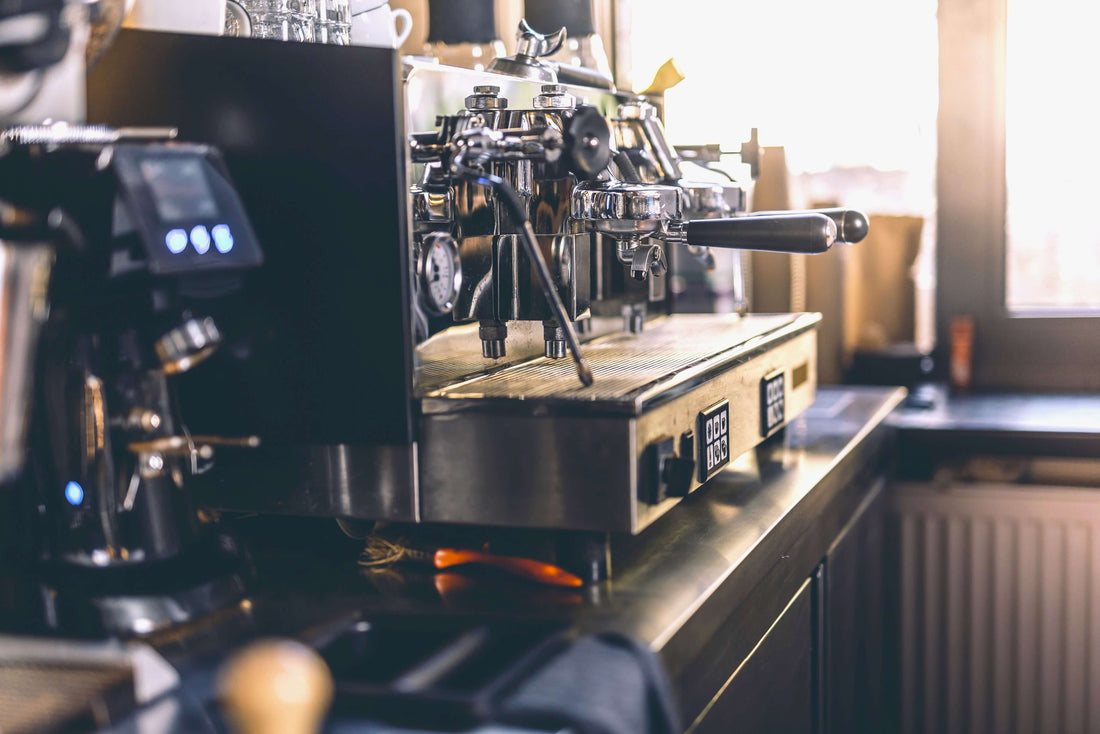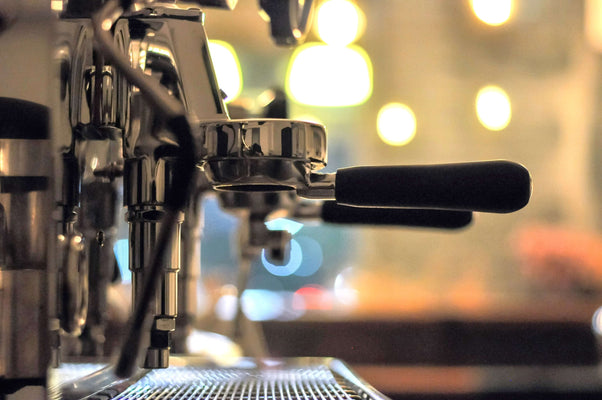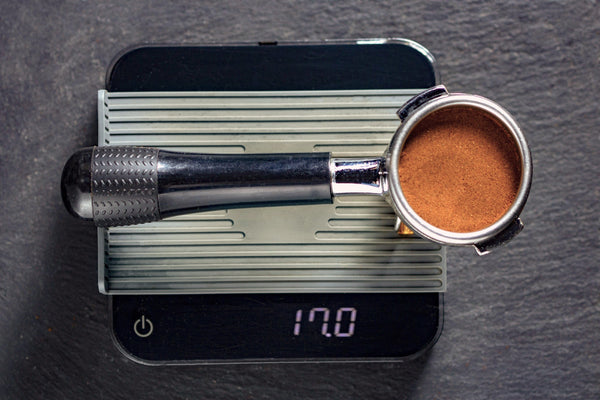
Coffee 101: What is Espresso?
tai attitude8 min read
Introduction to Espresso
Espresso is a coffee preparation method and a type of coffee with roots tracing back to the vibrant streets of Italy. Espresso resonates with many; it is immensely beloved and can be found on the menus of most coffee shops all over the world today.
The preparation of espresso requires an espresso machine, in which a small volume of nearly boiling water at about 90 °C is pressurised under 9 bars (900 kPa) expressively through finely grounded coffee.
The average car tyre pressure is pumped at between 1.8 and 2.2 bars.
Due to the highly pressurised brew process and the use of finely ground coffee, the extraction phase for espresso happens relatively quickly, ideally taking just about 24 to 32 seconds of brew time to complete.
Espresso is prepared on demand; whole coffee beans are ground just before brewing to ensure the most aromatics get into the cup.
The advancement of espresso machines ensures a higher degree of consistency for extraction as well.
For the reasons stated, espresso is overall a very efficient coffee preparation method. It can be summarised as a fresh, quick, yet tasty way to experience coffee.
Sensory perception
The resulting beverage from this coffee preparation method is also referred to as espresso.
Espresso is a small-volume beverage with higher viscosity and intense, concentrated flavours. This becomes apparent when compared to coffee brewed by any other coffee preparation method. Furthermore, espresso is unique in that it has crema on top.
 A beautiful espresso with crema on top is served in a demitasse cup.
A beautiful espresso with crema on top is served in a demitasse cup.
Indulge in espresso to experience one of the absolute best ways to enjoy coffee.
The true definition
The definition of espresso is both a type of coffee preparation method and the beverage made from it.
Therefore, coffee beans grown from any producing region, be they single origin or bean blends with any roasting degree, can be used to make true espresso as long as they are finely ground to be brewed via an espresso machine.
To put it in perspective, in Italy, a bean blend with a darker roast is generally preferred to be used to prepare espresso. In Norway, preparing espresso with single origin in a lighter roast is more common, for instance. It is a matter of local culture and preferences.
Size, length, and EBR
Espresso is referred to as a "shot" as its unit. For example, one shot of espresso, two shots of espresso, etc.
The term "pulling espresso shot" refers to brewing espresso. The term is still used to this day and is derived from espresso preparation from the old days, which involved pulling a lever on older espresso machines to create pressure. Now, modern espresso machines use pumps for pressure.
So, what determines a shot of espresso?
The answer is that a shot of espresso is determined by its size and length.
These terminologies are standardised, but the values of size and length may vary substantially from place to place.
Size
Depending on the capacity of the filter basket used, which typically comes in 7g, 15g, 18g, 20g, 22g, and 25g capacities, a proportional amount of ground coffee can be fit within it to determine the size of the espresso serving.
The larger the filter basket, the more ground coffee can be brewed, and thus the larger the size of the espresso will be. Vice versa.
The size terminologies are solo (single), doppio (double), or triplo (triple) shots of espresso.
The more common setup in most coffee shops across the world is portafilters with two spouts, equipped with a doppio-capacity (15g, 18g, or 20g) filter basket to yield a doppio espresso shot per brew.
Alternatively, each spout can optionally pour doppio-brewed espresso into two separate cups, essentially splitting one doppio-brewed espresso shot into two solo espresso shots.
Solo-brewed espresso shots from a solo-capacity (7g) filter basket are rarer nowadays, with solo espresso shots served in coffee shops generally being half of a doppio espresso shot, as aforementioned.
Overall, espresso's size is determined by the dosage that is used to prepare it, where dosage correlates with the capacity of the filter basket used.
Length
Once a size (dosage) is decided, the other key is determining how much water to pass through it during the brewing, thereby referring to as the length.
The more water used, the more length the espresso will be. Vice versa.
The length terminologies are ristretto (restricted), espresso (standard/express), or lungo (long).
 From left to right: lungo, espresso, and ristretto.
From left to right: lungo, espresso, and ristretto.
The length corresponds to a smaller or larger beverage with the same amount of ground coffee used, just with a different amount of water used.
The measurement of length used to be volumetric; it has since been slowly replaced by weighting the mass of the beverage instead, which is a more accurate assessment.
Generally,
Ristretto is an underextracted shot brewed with less water. (with a shorter brew time).
Espresso is an ideally extracted shot brewed with the right amount of water. (24-32 seconds).
Lungo is an over-extracted shot brewed with more water. (with a longer brew time).
Espresso Brew Ratio
When both size and length are determined, the relationship between them is referred to as the espresso brew ratio (EBR).
Think of EBR as input: output, from how much ground coffee to how much coffee liquid.
For reference,
Ristretto is aimed at a ratio range of 1:1–1:1.5.
Espresso is commonly targeted at ranges of around ±1:2.
Lungo is typically in a ratio range of 1:3 or more.
For example, based on the reference above, let's say we are making espresso. If the dosage that fits in the filter basket is 18g, then the length is ideally targeted at around 36g. If the filter basket fits 15g, then the length will be around 30g. So on and so forth.
Commercial coffee shops use terminology to communicate. Solo, doppio, triplo, ristretto, and lungo are commonly used. In other words, the value of these terminologies is fixed by the respective coffee shop's SOP, and customers would order what's available on the menu.
On the other hand, specialty coffee shops communicate with EBR, which is arguably more straightforward. The terminologies are dropped, and literally everything made is defined as espresso. The value of size and length is determined by the barista on a daily basis for deliciousness. Customization of the order is still possible; do be sure to inform the barista.
What is in the espresso?
A well-extracted espresso shot disperses three distinct layers. Anyhow, the three distinct layers can only be visualised in a transparent cup within a 15-second window, right after the espresso is brewed.
Observing the three dispersed layers of espresso is one way to indicate consistency. For quality (deliciousness) assessment, tasting would be the way.
 A freshly brewed espresso in a transparent shot glass, it will turn black after about 15 seconds. Quality is unaffected by this change.
A freshly brewed espresso in a transparent shot glass, it will turn black after about 15 seconds. Quality is unaffected by this change.
Espresso is a complex, flavourful beverage in such a small volume; let us grasp what is in it in order to appreciate it. In addition, to know what a good one generally tastes like.
The following is only true when savouring a good espresso, unstirred, in three sips for a multi-layered experience.
Crema
Atop the espresso shot rests a golden-yellow layer known as the crema (cream). The crema is composed of primarily emulsified oils, a result of the dispersion of carbon dioxide and air under substantial pressure within the liquid.
This foamy layer embraces the coffee oils, some aromatic qualities, and mostly bitter compounds. It is overall bitter in taste, though. The first sip, crema, is the least delicious part of the three.
The crema becomes thinner as time passes due to the gases trapped in it escaping into the atmosphere.
Body
Beneath the crema and above the heart of the espresso shot is the body of the espresso shot. This is the middle layer with a caramel brown tone, and this visual shall only last for about 15 seconds before fully turning to the colour of the heart.
The content of this middle-layered body is comprised of dissolved solids extracted from ground coffee, mostly bitter and acid compounds. This second sip, body, is responsible for the bursting flavours of the espresso.
Heart
At the bottom of the espresso shot is the heart of the espresso. The colour of the heart is dark brown to black. Heart is the most delicious part of the three.
Within the heart of the espresso shot are mostly acids and sugar compounds extracted from ground coffee, which give the espresso its richness, acidity, and sweetness. The best is at the last sip.
Types of Espresso Beverages
Espresso can be enjoyed with or without sugar. By preference, it can also be used as an ingredient to craft various exciting espresso beverages.
Espresso beverages are defined as beverages made with at least a solo espresso shot as the base.
Coffee shops that serve espresso will surely offer an array of different espresso beverages on the menu, especially the classic staples such as americano, cappuccino, mocha, etc. All the same, there are many other espresso beverages out there, and new ones are being invented from time to time.
 An illustration of some types of espresso beverages. Which one is your favourite?
An illustration of some types of espresso beverages. Which one is your favourite?
Please keep in mind that there is no international standard for preparing each of these beverages. Just a quick Google search will give more than 10 different ways to prepare a caffè latte, for instance.
It turns out espresso beverages are truly culturally driven and continuously improve with time; as such, there is no correct or definitive way to prepare them.
There are universal standards in terms of terminology for espresso beverages, but the methodology used to prepare them can be different from place to place.
At the end of the day, it is up to the café owner to standardise theirs. Baristas learn the craft of preparing and serving espresso beverages on shift.
While it is important to get it right according to your coffee shop standards, it is even more important to appreciate the culture and preferences of others.
Arguments with fellow coffee enthusiasts about espresso beverages are needless. Rather, let us exchange ideas to continuously improve with time.



